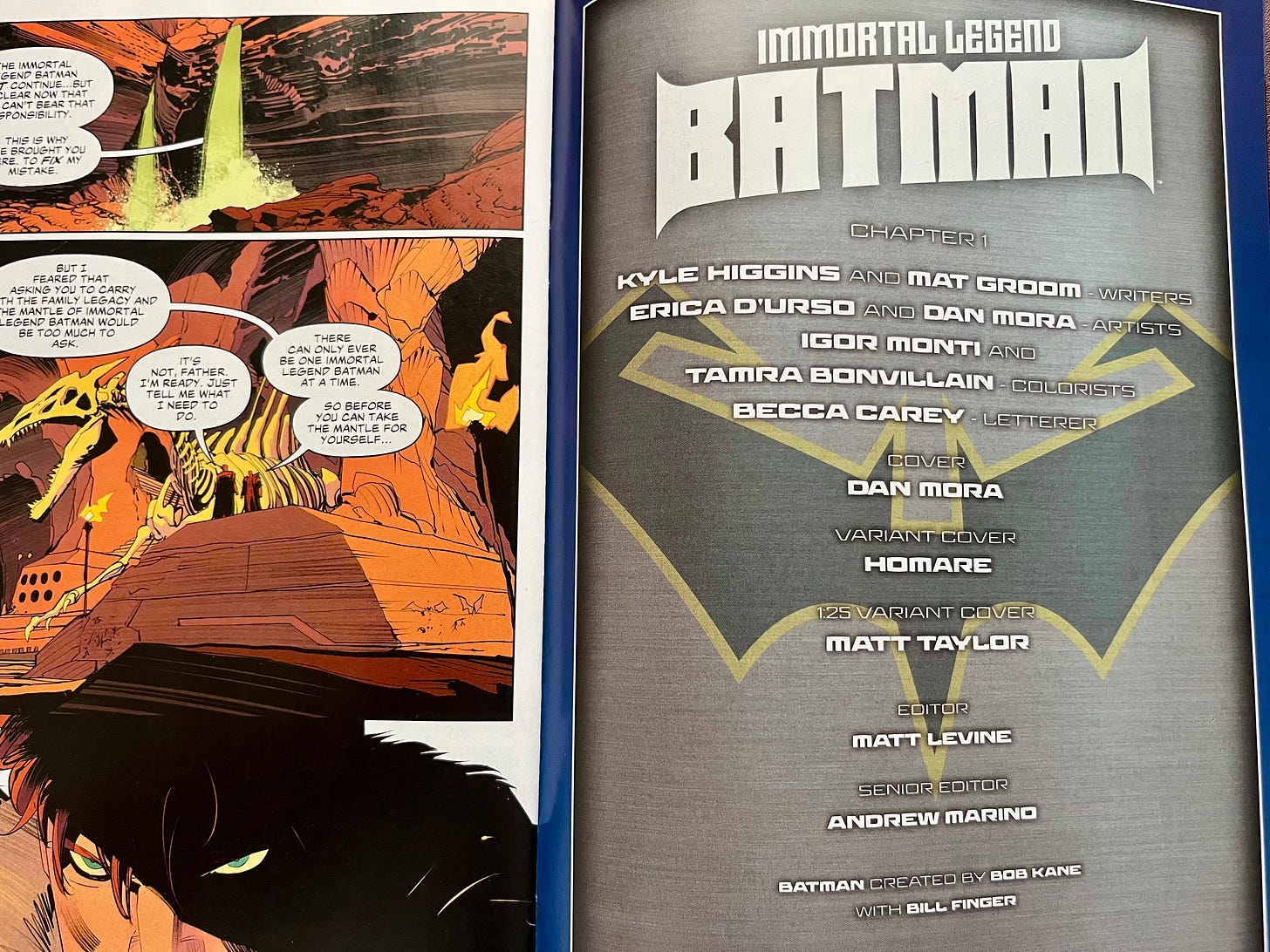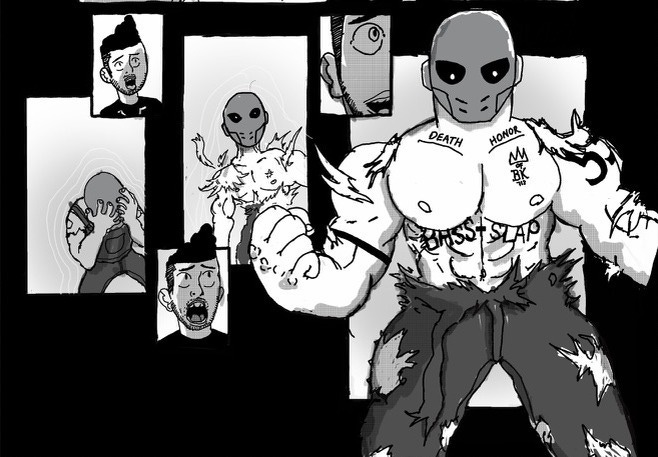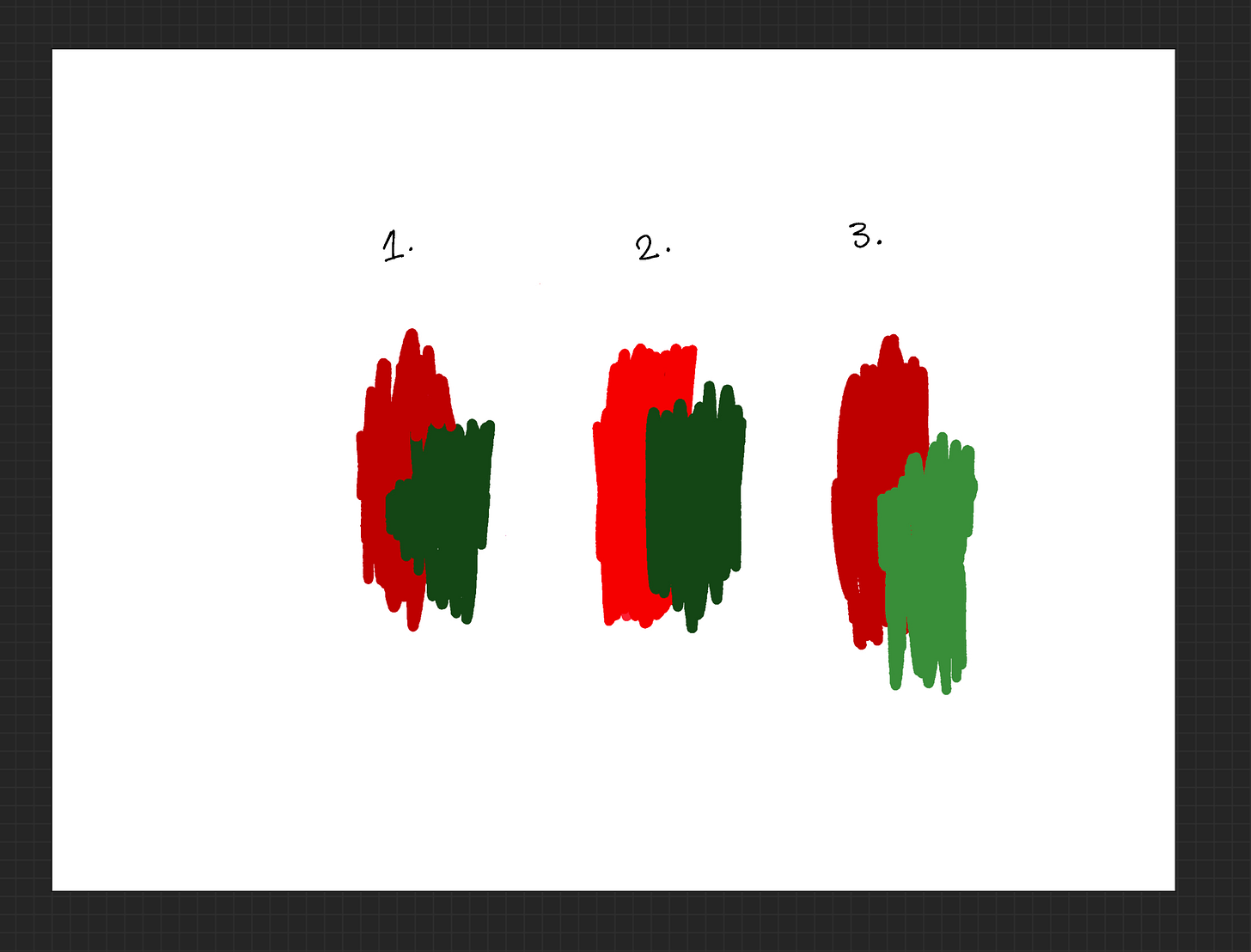Gutter Thoughts 029: Three Reasons Black and White Comics Make You a Better Artist.
Why stripping out color teaches speed, clarity, and style.
The Stoic Quote of the Week
“It is not that we have a short time to live, but that we waste a lot of it.”
— Seneca, On The Shortness of Life
Hey there!
Here’s a confession: I used to hate coloring my comics (and I still kinda do).
Every new chapter, I hit the same wall. I’d sketch, thumbnail, ink—and then stall when it came time to add color. I second-guessed every palette, dragged deadlines, and lost steam on projects I cared about. Looking back at my sketchbooks, I noticed something obvious: I almost never used color. What I loved—what kept me coming back—was black ink on white paper.
That realization changed everything.
Black and white isn’t a fallback. It’s a foundation. It teaches speed, clarity, and storytelling in ways color often hides. If you’re a new or intermediate cartoonist, working in black and white can make you faster, sharper, and more confident.
Here are three reasons why.
1. Black and white gives you time to focus on what matters.
The hardest part of making comics isn’t drawing—it’s time. You’re not a team of six or seven with colorists, inkers, and letterers. You’re one person. Every extra step multiplies the hours it takes to finish.
Coloring can double, or even triple, the timeline of a project. For most indie creators, that’s the difference between finishing or abandoning a comic.
Black and white simplifies the process. You don’t waste hours testing palettes or reworking harmony. You focus on story and art—the things readers actually remember.
The result: you finish more stories.
Manga proves this point. Tight deadlines force Japanese creators to strip the process down to essentials: narrative, expression, and pacing. That’s why most series, from One Piece to Chainsaw Man, run in black and white. Story comes first.
Indie cartoonists like Michael DeForge, Simon Hanselmann, and Charles Forsman followed the same path. For them, black and white wasn’t a limitation. It was leverage.

2. You master values before you master color.
Color is just values in disguise. If you don’t understand light and shadow, your colors will fall flat.
Values—black, white, and gray—form the skeleton of a page. They show where light hits, where shadows fall, and how to balance positive and negative space. Nail values and coloring become simple.
The late Jesse Hamm explained this through the inking technique of “Burn and Bury.”
“Burn out details on the lit side of objects by thinning the lines and using less detail.
Bury details on the unlit side of objects, covering them with black shadow instead of trying vainly to preserve useless detail.”
Though he was talking about inking, the principle applies directly to values: it trains your eye to place light and shadow in a panel before you add color.

I learned this too late. For years, I treated coloring as decoration—add hues, pick a palette, done. Without a value structure, everything looked flat. Once I trained my eye in black and white, color stopped being random. I knew where to go lighter or darker. I understood contrast. Coloring became faster, easier, and more fun—even if it still wasn’t my favorite part.
That’s the benefit: once you master values, color becomes a tool, not an obstacle.
3. Constraints force you to problem-solve—and that’s how style develops.
Remove color, and you remove shortcuts. You can’t lean on a red glow to show fire or a neon aura to suggest magic. You have to invent solutions with ink alone.
That’s where style comes from.
Constraints force you to think deliberately. Do you thicken a line or hatch a shadow? Do you leave space open or bury it in black? Each choice builds a visual vocabulary that becomes recognizable over time. Readers spot your work not by the palette you pick, but by how you solve problems on the page.
Paradoxically, limits expand your voice.
A few things to remember.
This isn’t an anti-color manifesto. Some artists think in palettes the way others think in lines. If that’s you, don’t fight it. Double down on your strength.
But for many, skipping straight to color creates paralysis. You stall, procrastinate, and delay projects. Black and white cures that. It gets you moving, teaches fundamentals, and frees you to finish.
And finishing, not perfecting, grows both your craft and your audience.
My own lesson.
When I worked on Boom Kid, I tried to color everything. Every chapter dragged because I second-guessed every choice. I procrastinated, delayed, and burned out.
Eventually, I took The Futur’s Color for Creatives course. It taught me the role of values and how to see light and dark before hue. It helped—but it also gave me clarity: I don’t enjoy coloring. And that’s okay.
Now, I save color for special projects. For everything else, I go back to what brings me joy: thumbnails, inks, and black-and-white storytelling. That shift sped up my process and reconnected me to why I make comics in the first place.
Takeaway.
If you’re new to comics, start in black and white. It will:
Give you time to finish more stories.
Train your eye in values, the backbone of color.
Force you to problem-solve and develop your style.
Black and white isn’t a downgrade. It’s a discipline. It’s where your voice sharpens, your speed improves, and your style emerges.
Sometimes the simplest tools unlock the deepest joy in making comics.
Looking for more of my work? Start with Boom Kid—a story about power, identity, and loyalty.
This Week’s Creative Sparks
Here are the shows, books, movies, comics, and more that have sparked my creativity this week:
Video Game Spark: Hades 2
Video games like this inspire my art style. The Hades series isn’t just fun to play—it’s gorgeous to look at. Supergiant just dropped a new trailer ahead of the 1.0 release, and I can’t stop watching it. The colors pop, and the short storytelling hooks you right away.
Show Spark: Last Samurai Standing
I was minding my business online when I stumbled across this gem of a trailer—a Battle Royale–style competition set in feudal Japan. Yes, please. I’m hyped for this series, and let’s be honest: the trailer is pretty damn sick. The series drops on November 13.
Video Game Spark: Absolum Official Gameplay Trailer
This is a game I’ve had my eye on all year. The art alone is inspiring, but the style had me curious from the start. Now we finally get a closer look at the gameplay—and it doesn’t disappoint. Mixing a beat-’em-up with a roguelike is brilliant. It’s will be glorious. Absolum drops October 9.
That’s a wrap for this week’s Gutter Thoughts. Thanks for joining me on this creative journey—hopefully, something here sparked an idea or inspired your own work. Until next time, stay grounded, stay creative, and keep pushing forward.
This issue is sponsored by me.
I created Cut the Learning Curve, a free 5-day course for aspiring comic creators who are ready to stop guessing and start creating with confidence.
And if you’re more of a founder or creative team who wants this done for you, I also ghostwrite story-driven newsletters that build trust and drive conversion.



